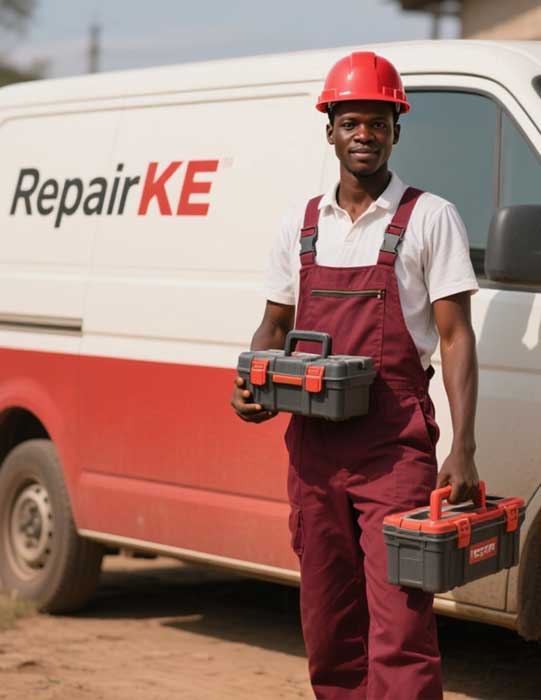
Binding Machines: Common Faults and Repair Solutions
Binding machines are essential tools in offices, schools, and print shops, enabling the professional assembly of documents, reports, and presentations. Whether comb, wire, coil, or thermal binding machines, these devices streamline the process of creating polished, bound materials. However, like any mechanical or electronic equipment, binding machines can develop faults over time due to wear, improper use, or lack of maintenance. This article explores the most common issues encountered with binding machines and provides practical repair solutions to keep them running smoothly.
Common Faults in Binding Machines
Binding machines vary in design and functionality, but certain problems are prevalent across different types. Below are the most frequent issues users face:
1. Jammed Punching Mechanism
The punching mechanism, responsible for creating holes in paper, can become jammed due to overloading, misalignment, or debris buildup. This issue is common in comb and coil binding machines, where users may attempt to punch too many sheets at once or insert materials incorrectly.
Symptoms:
- Paper gets stuck during punching.
- Punching lever is difficult to operate or feels resistant.
- Incomplete or uneven holes in the paper.
2. Misaligned or Uneven Binding
Misalignment occurs when the binding element (comb, wire, or coil) does not properly align with the punched holes, resulting in a poorly bound document. This can happen due to improper setup, worn components, or user error.
Symptoms:
- Binding elements fail to close properly.
- Pages are loose or fall out of the binding.
- Uneven or skewed binding appearance.
3. Overheating in Thermal Binding Machines
Thermal binding machines use heat to melt adhesive in the binding spine, securing pages. Overheating can occur if the machine is used continuously without adequate cooling periods or if the heating element malfunctions.
Symptoms:
- Machine shuts off unexpectedly.
- Burnt or melted binding covers.
- Unpleasant odors or smoke during operation.
4. Motor or Electrical Failures
Electric binding machines rely on motors and circuitry to automate punching and binding. Electrical faults, such as blown fuses, faulty wiring, or motor burnout, can render the machine inoperable.
Symptoms:
- Machine does not power on.
- Intermittent operation or sudden stops.
- Strange noises (e.g., grinding or buzzing) from the motor.
5. Worn or Broken Binding Components
Binding components, such as combs, wires, or coils, can become worn or damaged over time, especially if low-quality materials are used or the machine is overworked.
Symptoms:
- Combs or wires break during binding.
- Coils fail to feed properly through punched holes.
- Binding elements appear deformed or weak.
6. Paper Feed Issues
Some binding machines have automatic paper feeders, which can malfunction due to dust, debris, or mechanical wear. This leads to paper jams or improper feeding during punching or binding.
Symptoms:
- Paper does not feed smoothly into the machine.
- Frequent jams in the feed tray.
- Inconsistent punching or binding results.
Repair Solutions for Binding Machine Faults
Addressing binding machine issues promptly can extend the lifespan of the equipment and prevent costly replacements. Below are repair solutions tailored to each common fault:
1. Clearing a Jammed Punching Mechanism
- Unplug the Machine: Always disconnect the machine from the power source to avoid injury or electrical shock.
- Remove Stuck Paper: Gently pull out any jammed paper, ensuring not to tear it. Use tweezers for small fragments if necessary.
- Clean the Punching Area: Use a soft brush or compressed air to remove paper dust and debris from the punching dies. Avoid using sharp objects that could damage the mechanism.
- Check Capacity Limits: Refer to the machine’s manual to ensure you’re not exceeding the recommended sheet capacity (typically 15–20 sheets for most manual machines).
- Lubricate Moving Parts: Apply machine-safe lubricant (e.g., silicone-based) to the punching mechanism to reduce friction, following manufacturer guidelines.
2. Correcting Misaligned or Uneven Binding
- Verify Setup: Double-check that the paper is aligned properly in the punching tray and that the binding element matches the hole pattern (e.g., 19-hole for comb binding).
- Adjust Guides: Most machines have adjustable edge guides or alignment pins. Ensure they are set correctly for the paper size and binding type.
- Inspect Components: Check for worn or damaged punching dies or binding combs. Replace any faulty parts with manufacturer-approved replacements.
- Test with Fewer Sheets: Punch and bind a smaller stack of paper to ensure proper alignment before processing larger documents.
3. Managing Overheating in Thermal Binding Machines
- Allow Cooling Periods: Let the machine rest for 10–15 minutes after every 20–30 minutes of continuous use to prevent overheating.
- Clean Vents: Ensure the machine’s ventilation slots are free of dust and debris, as blockages can cause heat buildup. Use compressed air for cleaning.
- Check Heating Element: If overheating persists, the heating element or thermostat may be faulty. Contact the manufacturer or a professional technician for repairs.
- Use Correct Covers: Ensure you’re using thermal binding covers compatible with the machine’s specifications to avoid melting or adhesive issues.
4. Troubleshooting Motor or Electrical Failures
- Check Power Supply: Verify that the machine is plugged into a stable power source and that the outlet is functioning.
- Inspect Fuses and Wiring: For machines with replaceable fuses, check if the fuse is blown and replace it with one of the same rating. For wiring issues, consult a professional electrician.
- Reset the Machine: Some machines have a reset button or require a power cycle (unplug for 10 minutes) to resolve minor electrical glitches.
- Professional Repair: If the motor or circuitry is damaged, contact the manufacturer or an authorized repair service, as these components often require specialized tools and expertise.
5. Replacing Worn or Broken Binding Components
- Use Quality Supplies: Invest in high-quality binding combs, wires, or coils from reputable suppliers to reduce wear and tear.
- Replace Damaged Parts: If the machine’s binding mechanism (e.g., comb opener or wire closer) is damaged, order replacement parts from the manufacturer or an authorized dealer.
- Regular Maintenance: Inspect binding components regularly for signs of wear and replace them before they cause further damage to the machine.
6. Resolving Paper Feed Issues
- Clean Feed Rollers: Use a lint-free cloth and isopropyl alcohol to clean the feed rollers, removing dust and paper residue that can cause slipping.
- Check Tray Alignment: Ensure the paper tray is properly aligned and that paper is loaded evenly to prevent jams.
- Adjust Feed Settings: For machines with adjustable feed settings, consult the manual to optimize settings for the paper type and thickness.
- Inspect for Wear: If feed issues persist, the rollers or feed mechanism may be worn. Contact the manufacturer for replacement parts or service.
Preventive Maintenance Tips
To minimize faults and prolong the life of your binding machine, adopt these maintenance practices:
- Regular Cleaning: Clean the machine after every use to remove paper dust, adhesive residue, and debris.
- Follow Capacity Guidelines: Avoid overloading the machine beyond its specified punching or binding capacity.
- Store Properly: Keep the machine in a dry, dust-free environment to prevent corrosion or electrical issues.
- Schedule Professional Servicing: Have the machine serviced annually by a qualified technician to address wear and tear before it escalates.
- Train Users: Ensure all operators are trained on proper machine use to prevent user-related errors.
When to Seek Professional Help
While many binding machine issues can be resolved with basic troubleshooting, some problems require professional expertise. Consider contacting a technician or the manufacturer if:
- The machine exhibits persistent electrical or motor issues.
- Internal components, such as the punching dies or binding mechanism, are damaged beyond simple replacement.
- The machine is under warranty, as DIY repairs may void coverage.
Binding machines are invaluable for creating professional documents, but they require regular care and attention to perform reliably. By understanding common faults—such as jammed mechanisms, misaligned bindings, or overheating—and applying the appropriate repair solutions, users can keep their machines in top condition. Preventive maintenance and proper usage are key to avoiding costly repairs and ensuring consistent, high-quality binding results. With these tips, your binding machine can remain a dependable asset for years to come.




